
Illustration by Alika Lindbergh
An appreciation of a friend by Loren Coleman
August 22, 2011
Bernard Heuvelmans (1916 – 2001)

Illustration by Alika Lindbergh
An appreciation of a friend by Loren Coleman
Switzerland’s Museum of Zoology of Lausanne informed cryptozoologists worldwide on the morning of 24 August 2001, of the death of Dr. Bernard Heuvelmans, 84, the “Father of Cryptozoology.” Around noon on August 22nd, without suffering, Heuvelmans, passed away, in his bed at his Le Vesinet, France home, with his faithful dog nearby.
Heuvelmans, who had become a Buddhist during his lifetime, was buried in Buddhist monk attire during a private funeral at Le Vesinet on August 27. His former wife, colleague, artist collaborator Alika (Monique Watteau) Lindbergh, who cared for him in his declining years, was in charge of the ceremony, following his last wishes.
Heuvelmans’ death is sad news. His towering presence in the field leaves a long shadow. His influence is great. Heuvelmans’ contributions to cryptozoology, zoology, and anthropology are significant and far-reaching, and his impact on generations to come will cross decades.
Bernard Heuvelmans was born in Le Havre on October 10, 1916, of a Dutch mother and a Belgian father in exile, and was raised as a “native of Belgium.” Heuvelmans found he had a love of natural history from an early age, keeping all kinds of animals, especially monkeys. At school, he shocked his Jesuit teachers by his unholy interest in evolution and jazz. His interest in unknown animals was first piqued as a youngster by his reading of science-fiction adventures such as Jules Verne’s Twenty Thousand Leagues Under the Sea and Sir Arthur Conan Doyle’s The Lost World. He never forgot these initial passions.
Heuvelmans obtained his higher education at the University Libre of Brussels. While at the university, he won the first prize for small bands at an International Congress of Amateur Jazz. At the age of 23 years, before World War II, he obtained a doctor’s title in zoological sciences. His thesis was dedicated to the classification of the hitherto unclassifiable teeth of the aardvark (Orycteropus afer), a unique African mammal. Heuvelmans then spent the next years writing about the history of science, publishing numerous scientific works notably in the Bulletin of the Royal Museum of Natural History of Belgium. His interests continued to extend beyond the zoological realm. Captured by the Germans after he was called up for military service from Belgium, he escaped four times before eking out a living as a professional jazz singer and then as a science writer. He saw himself as a humanist in the broadest sense, and he published two works late in the war: The Man Among Stars (1944) and The Man in the Hollow of the Atom (1943). The Germans, during the war, arrested him because his writings offended them, and then the Belgians arrested him afterwards, because he had written them at all.
Settling in Paris and more particularly in Le Vésinet from 1947, Heuvelmans became a comedian, a jazz musician (From Bamboula to Be-bop, 1949), and a writer (The Secret of Fates in three volumes, The Continuation of the Life, The Abolition of the Death, The Renovation, 1951-1952).
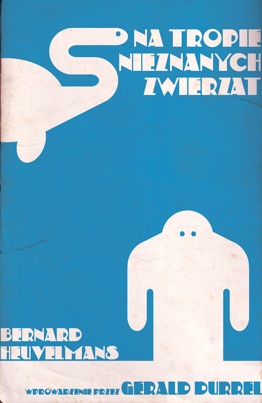
When Heuvelmans read a January 3, 1948 Saturday Evening Post article (“There Could be Dinosaurs”), in which biologist Ivan T. Sanderson sympathetically discussed the evidence for relict dinosaurs, Heuvelmans decided to pursue his vague, unfocussed interest in hidden animals in a systematic way. At the time, he was translating numerous scientific works, among which was The Secret World of the Animals by Dr. Maurice Burton, which was republished afterward in seven volumes under the title Encyclopedia of the Animal Kingdom.
Heuvelmans began to gather material about yet-to-be-discovered animals in what he would later refer as his growing “dossiers” on them. From 1948 on, Heuvelmans exhaustively sought evidence in scientific and literary sources. Within five years he had amassed so much material that he was ready to write a large book. That book turned out to be Sur la piste des betes ignorees, published in 1955, and better known in its English translation three years later as On the Track of Unknown Animals. Almost five decades later, the book remains in print, with more than one million copies sold in various translations and editions, including one in 1995, with a large updated introduction.
The book’s impact was enormous. As one critic remarked at the time, “Because his research is based on rigorous dedication to scientific method and scholarship and his solid background in zoology, Heuvelmans’s findings are respected throughout the scientific community.” Soon Heuvelmans was engaged in massive correspondence as his library and other researches continued.
In the course of letter-writing, he invented the word “cryptozoology” (it does not appear in On the Track). That word saw print for the first time in 1959 when French wildlife official Lucien Blancou dedicated a book to the “master of cryptozoology.”
Heuvelmans corresponded with many cryptozoologists worldwide, as he did with me, over the decades. By the 1960s, most in the field had elevated Blancou’s phrase in honor of Heuvelmans, and Heuvelmans was being called the “Father of Cryptozoology.”
Writing in Cryptozoology in 1984, Heuvelmans said, “I tried to write about it according to the rules of scientific documentation.” Because of the unorthodox nature of his interests, however, he had no institutional sponsorship and had to support himself with his writing. “That is why,” he wrote, “I have always had to make my books fascinating for the largest possible audience.”
Heuvelmans and his book influenced the investigative work of cryptozoology supporter Tom Slick. Sanderson, who influenced Heuvelmans, in turn was influenced by Heuvelmans. Heuvelmans served as a confidential consultant, along with such intellectual early contributors like anthropologist George Agogino and zoologist Ivan Sanderson, on Slick’s secret board of advisors. Heuvelmans was asked to examine the “Yeti skullcap” brought back by Sir Edumund Hillary’s World Book expedition of 1960. He was also one of the first to declare it was a ritual object made from the skin of a serow, a small goatlike animal found in the Himalayas, even before Hillary’s debunking of the yeti took place. Heuvelmans’ extensive files on the Slick expeditions remained mostly unpublished until he contributed some for inclusion in the 1989 book, Tom Slick and the Search for the Yeti.
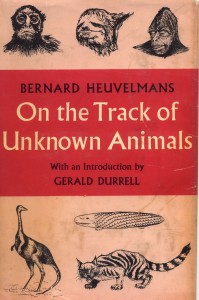
On the Track of Unknown Animals was concerned exclusively with land animals. The second of Heuvelmans’ landmark works to be translated into English, In the Wake of the Sea-Serpents (1968), covered the ocean’s unknowns, including the recognized but still in some ways enigmatic giant squid.
In 1968, Heuvelmans (at Sanderson’s invitation) examined what was represented to be the frozen cadaver of a hairy hominoid, the subject of his L’homme de Neanderthal est toujours vivant (with Boris Porshnev, 1974). Other books, none yet translated into English, include works on surviving dinosaurs and relict hominids in Africa.
Heuvelmans’s Center for Cryptozoology, established in 1975, was first housed near Le Bugue in the south of France, but in the 1990s, moved to LeVesinet, closer to Paris. It consisted of his huge private library and his massive files, his original treasured dossiers. Heuvelmans was elected president when the International Society of Cryptozoology was founded in Washington, D.C., in 1982. He held that position until his death. He also was involved with the British Columbia Scientific Cryptozoology Club and other efforts for active cryptid studies globally. The decades saw more and more honors amassed, as for example, when in 1990, he was named a honorary member of the Cryptozoology Association of Russia. In a 1984 interview Heuvelmans expressed the desire to write a 20-volume cryptozoology encyclopedia, but owing to the death of a translator and other problems with his publisher, no volume appeared before Heuvelmans’ death.

Down through the years, without fanfare, Heuvelmans journeyed from the shores of Loch Ness to the jungles of Malaysia, from Africa to Indonesia, interviewing witnesses and examining the evidence for cryptids.He produced a few articles along the way, and infrequently gave news interviews. But beginning in the 1990s, he would avoid media events. For example, when a television network asked in 1994 and 1995, to tape an interview with Heuvelmans about the Minnesota Iceman, he refused to come to America to do it, and then denied a filming in France. Although he had had a French television program on natural history mysteries some two decades earlier, he routinely would not grant most mainstream interviews in the last decade of his life.
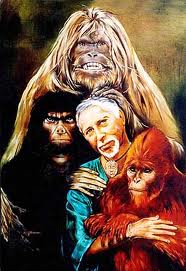
He also hardly ever trekked to formal meetings. For many of us in North America, visiting with him, for example, at an early 1980s gathering in New York City, will now always be a delightful and rare memory. When in February 1997, he was awarded the Gabriele Peters Prize for Fantastic Science at the Zoological Museum of the University of Hamburg, Germany, he was unable to appear to collect the prize of 10,000 Marks (about $6000) and sent his friend, journalist, and cryptozoologist Werner Reichenbach, to accept on his behalf.
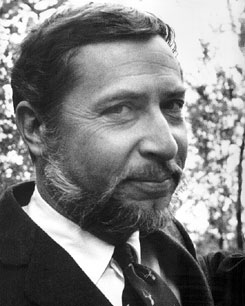
Heuvelmans’s health began to more rapidly fail in the mid-1990s; still he continued to work on completing his grand plan for his multi-volume encyclopedia. In 1999, he donated his vast holdings and archives in cryptozoology to The Museum of Zoology of Lausanne in Switzerland, following through on a commitment he had made in 1987. By 2001, many of us were dismayed to find he was mostly bedridden, refusing visits, and in very poor health.

In his waning years, his mind was filled with worries that no one would credit him for what he had done. He need not have troubled himself. Heuvelmans said he merely wanted to be remembered as “The Father of Cryptozoology.” He will be recalled thusly for his efforts on behalf of the new science, as well as much more, for his personality and scholarship. Bernard Heuvelmans, dead at 84, will hardly be forgotten.
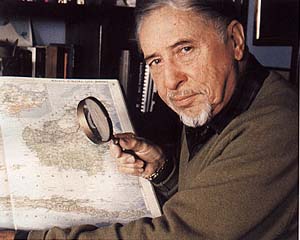
Nevertheless, Heuvelmans’ friendship, fresh insights, and frisky humor will be missed. Goodbye, my friend.
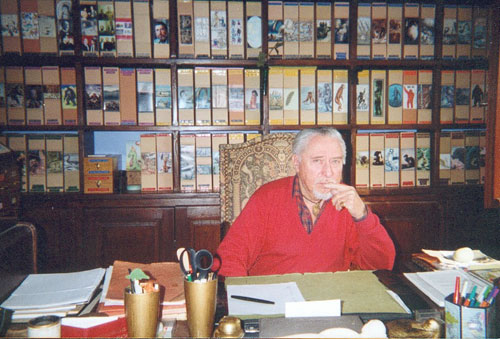
A list of Heuvelmans’s books follows:
1955 Sur la piste des bêtes ignorées. Paris: Plon.
1958 Dans le sillage des monstres marins – Le Kraken et le Poulpe Colossal. Paris: Plon.
1958 On the Track of Unknown Animals. London: Hart-Davis.
1959 On the Track of Unknown Animals. New York: Hill and Wang
1965 Le Grand-Serpent-de-Mer, le problème zoologique et sa solution. Paris: Plon.
1965 On the Track of Unknown Animals. (Abridged, revised.) New York: Hill and Wang.
1968 In the Wake of Sea Serpents. New York: Hill and Wang.
1975 Dans le sillage des monstres marins – Le Kraken et le Poulpe Colossal. Paris: François Beauval : 2nd édition revue et complétée.
1975 Le Grand-Serpent-de-Mer, le problème zoologique et sa solution. Paris: Plon, 2nd édition revue et complétée.
1978 Les derniers dragons d’Afrique. Paris: Plon.
1980 Les bêtes humaines d’Afrique. Paris: Plon.
1995 On the Track of Unknown Animals. London: Kegan Paul International.
Heuvelmans, Bernard, and Boris F. Porchnev
1974 L’homme de Néanderthal est toujours vivant. Paris, Plon.
©2001 Loren Coleman
About Loren Coleman
Loren Coleman is one of the world’s leading cryptozoologists, some say “the” leading living cryptozoologist. Certainly, he is acknowledged as the current living American researcher and writer who has most popularized cryptozoology in the late 20th and early 21st centuries.
Starting his fieldwork and investigations in 1960, after traveling and trekking extensively in pursuit of cryptozoological mysteries, Coleman began writing to share his experiences in 1969. An honorary member of Ivan T. Sanderson’s Society for the Investigation of the Unexplained in the 1970s, Coleman has been bestowed with similar honorary memberships of the North Idaho College Cryptozoology Club in 1983, and in subsequent years, that of the British Columbia Scientific Cryptozoology Club, CryptoSafari International, and other international organizations. He was also a Life Member and Benefactor of the International Society of Cryptozoology (now-defunct).
Loren Coleman’s daily blog, as a member of the Cryptomundo Team, served as an ongoing avenue of communication for the ever-growing body of cryptozoo news from 2005 through 2013. He returned as an infrequent contributor beginning Halloween week of 2015.
Coleman is the founder in 2003, and current director of the International Cryptozoology Museum in Portland, Maine.
Filed under Cryptomundo Exclusive, CryptoZoo News, Cryptozoologists, Cryptozoology, Obituaries